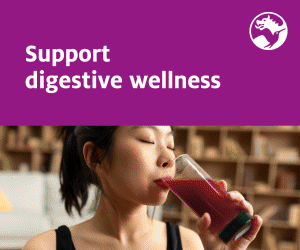What has historically been a stronghold for tablets, capsules and softgels is morphing into something quite interesting. And it’s no accident. Consumers are changing the way they manage and consume supplemental nutrition, and smart manufacturers and suppliers are paying attention. Or at least they should be.
The move toward more innovative, convenient dosage and delivery forms for functional raw ingredients is in full swing. And it only takes a brief visit to US stores such as Whole Foods or Sprouts Market to observe it in all its glory. Single-serve tear pouches, gummies, shots, strips, liquids, rapid dissolve tablets, sprays, gels and chewables are everywhere … and consumers are rushing to purchase.
Pill fatigue: not just about seniors
I have long held the belief, and research confirms, that pill fatigue is not just a concern for ageing seniors, but also for baby boomers and millennials. The trend among all demographic groups is to take fewer “pills” and supplement their food intake with more convenient and less “intrusive” delivery forms.
The stereotypical supplement junkie who takes 15–20 capsules and tablets every morning is becoming more the exception than the rule. Today’s consumer is supplementing their diet with a range of nutritional solutions delivered in a myriad of ways. Specifically, through fortified foods and beverages, basic daily nutrition in the form of a multivitamin, plus occasion-specific or need-specific products dictated by their daily schedule or personal health profile.
So, in my opinion, the overall consumer trend is moving toward a more diverse selection of dosage forms based on specific needs and lifestyle. This has important implications for both manufacturers of supplements and suppliers of raw materials.
What are the key consumer drivers?
What is driving consumers toward these innovative delivery vehicles? Well, many consumers are
- looking for convenience and flexibility
- searching for new and innovative health solutions
- enjoying newfound empowerment to proactively manage their own health and wellness
- attracted to bright, shiny new things
- increasingly receptive to the recommendations of peers, friends and family
- responding to two phrases: social media and peer influences.
The social effect
It’s hard to overstate the impact that social forums have had on changing supplementation habits and practices. People talk about health on these social platforms. It’s a daily occurrence. It’s a topic that we all have in common. We think about it every day. The media harp on about it.
So, health awareness is high, and consumers generally don’t honestly feel they are doing enough to safeguard their own health, even if they eat right and exercise. Millennials are all about maximising and intensifying their daily life experience, and boomers are all about living longer and healthier until they are 90 years old. This makes for a fertile and vibrant online dialogue and new dosage and delivery forms lend themselves to sharing, exchange and recommendations.
Targeting specific consumer segments with delivery technologies
As manufacturers, suppliers and marketers, we are all trying to target consumers with messaging and presentation elements that intrigue, compel and facilitate engagement. One often-overlooked way to do this is to deliver your formula or ingredient in an innovative delivery form.
Senior adults can effectively be reached with powdered mix-in or sprinkle-on ingredients, liquids and sublinguals. Millennials are partial to gummies, shots and chewables. Gen X is all about gels and strong flavour delivery. Smart marketers are taking advantage of these delivery innovations to bring excitement, energy and word-of-mouth benefits to their products.
Why does delivery matter to consumers?
What I think we are all learning about the new emerging consumer, or Consumer 2.0 as I like to call them, is that they are smarter, more sceptical and much more selective than consumers of old. They have access to multiple venues to shop, compare and purchase. They basically hold all the cards.
Yet, for all their power and access control, they remain generally confused about supplements and rely heavily on User Generated Content (read: peer influence) to make buying decisions. They are also shunning traditional rituals such as the “three meals per day” paradigm and moving to new eating patterns and habits based around snacking.
What does that have to do with supplements you ask? Well, successful supplements of the future will have to compete for the limited attention of a busy and convenience-driven consumer who wants your potential health solutions to be available on demand and on their terms. So, delivering your product/ingredients in a dosage and form that is interesting, flexible and conforms to their lifestyle is vital and quickly becoming a cost of entry into the category.




